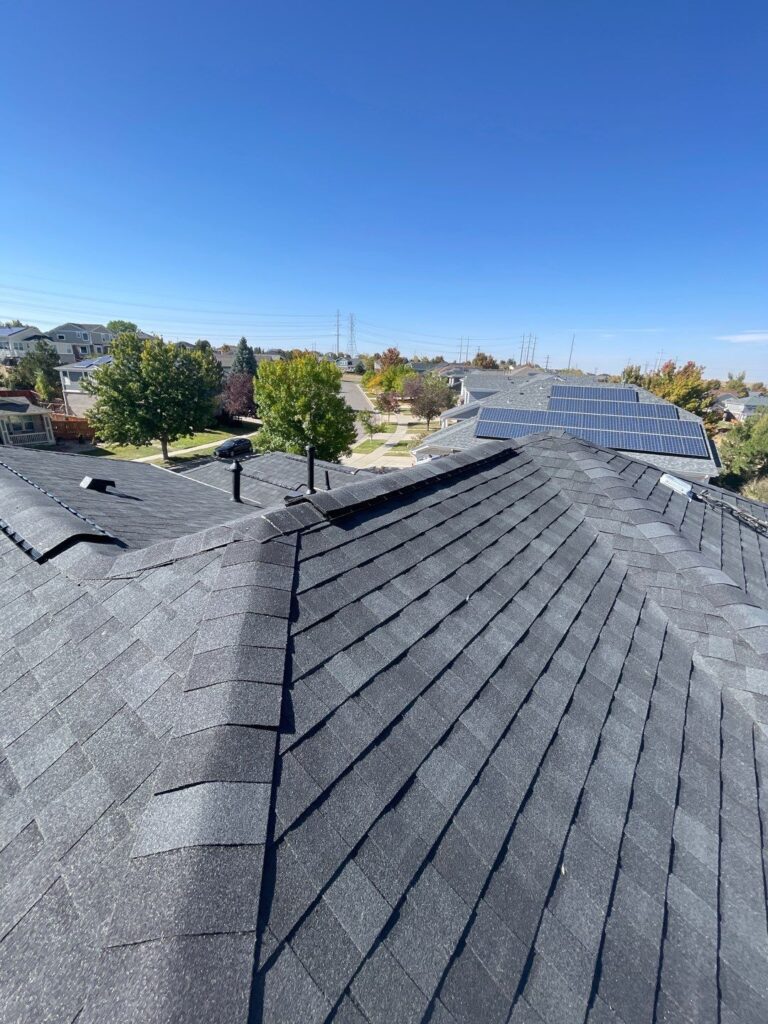As the fall season draws near, it’s essential to prepare your roof for the upcoming weather changes. The cooler temperatures, increased rainfall, and debris from falling leaves can put your roof at risk if it’s not properly maintained. At Tried and True Roofing, we understand the importance of preventative care to ensure your roof stays durable and your home protected. This comprehensive guide will help you get your Denver roof ready for the fall and avoid unnecessary damage.
How Fall Weather Affects Your Roof
With the shift to cooler fall weather, your roof faces new challenges. Temperature variations between day and night cause roofing materials to contract and expand, which may lead to cracks and weaknesses. Additionally, moisture from rain and falling leaves can lead to clogged gutters, water buildup, and leaks. Being proactive about maintenance can help you prevent these issues before they turn into costly repairs.
1. Clean Out Your Gutters and Downspouts
One of the first and most important steps in preparing your roof for fall is cleaning your gutters and downspouts. Leaves, branches, and other debris can collect in these areas, blocking the flow of water. When water can’t drain properly, it pools on your roof, potentially leading to leaks and damage to your roof and home’s foundation.
- Tip: After cleaning, flush water through your gutters to ensure proper drainage. Check for any cracks or damage to the gutters that may need repair before the fall rains start.
2. Inspect Your Roof for Damaged Shingles
Shingles are your roof’s protective barrier, so it’s important to ensure they’re in good condition heading into fall. Take time to inspect your roof for damaged, curled, or missing shingles, especially in areas prone to wear, like valleys and ridges. If not addressed, these damaged spots can let water infiltrate your home, resulting in leaks and potential structural harm.
- Action: Replace any damaged shingles you find, and if the damage is widespread, consider consulting a professional Denver roofer to assess whether more extensive repairs are needed.
3. Examine Roof Flashing for Leaks
Flashing is installed around roof features like chimneys, vents, and skylights to prevent water from penetrating the roof. With time, flashing may become loose or corrode, creating vulnerable areas where water can enter. Fall is a good time to carefully check all flashing areas for cracks, rust, or any signs of movement that could allow water to seep in.
- Recommendation: Tighten or replace any loose flashing, and apply sealant to ensure these vulnerable areas remain watertight as the rainy season begins.
4. Trim Overhanging Branches
Trees that have branches hanging over your roof can cause several problems during fall. Branches may break off during windy weather and damage your shingles or flashing. Additionally, falling leaves can clog your gutters, increasing the risk of water buildup on your roof.
- Pro Tip: Regularly trim back any overhanging branches to reduce the chances of debris accumulation and damage during storms. This will also help keep your gutters clear of leaves and prevent blockages.
5. Check Attic Ventilation and Insulation
Proper attic ventilation is critical to maintaining your roof’s health year-round. If your attic doesn’t have enough airflow, heat and moisture can build up, causing problems like mold, wood rot, and even ice dams in the winter. Additionally, poor insulation can lead to temperature fluctuations in your home, driving up energy costs.
- Inspection: Ensure your attic vents are clear of debris, and check that insulation levels are sufficient to maintain even indoor temperatures. This helps prevent condensation and keeps your roof in better shape.
6. Schedule a Professional Roof Inspection
While homeowners can take on several maintenance tasks themselves, a professional roof inspection is always recommended, especially before the fall season. Professionals can identify issues that are easy to miss and provide solutions to prevent more severe problems in the future. Roofing companies in Denver, like Tried and True Roofing, offer thorough inspections to catch hidden damage or vulnerabilities that could worsen over time.
- Why It’s Worth It: A professional roofer will check your shingles, flashing, ventilation, and other critical components, ensuring that your roof is ready to face the fall weather with minimal risk.
Why Fall Roof Maintenance Is Vital
Preparing your roof for fall isn’t just about preventing immediate damage—it’s about extending the life of your roof and maintaining the overall health of your home. By addressing issues early, you can avoid costly repairs down the road, improve your home’s energy efficiency, and keep your family safe from leaks and structural damage.
Seasonal maintenance ensures that your roof is in prime condition to handle temperature fluctuations, moisture, and falling debris, which can all lead to major issues if ignored. At Tried and True Roofing, we believe in taking proactive steps to maintain your roof’s performance throughout the year.
Key Tips:
- Clear out gutters and downspouts to prevent clogs and water damage.
- Inspect and replace damaged shingles to prevent leaks.
- Check flashing around roof penetrations and reseal if necessary.
- Trim tree branches to reduce debris on the roof and prevent potential damage.
- Ensure proper attic ventilation and insulation to protect your roof and regulate your home’s temperature.
- Schedule a professional roof inspection with Tried and True Roofing to catch any hidden problems before they become major issues.
Don’t wait until the last minute—start your fall roof maintenance today and ensure your home stays safe and protected throughout the season!


